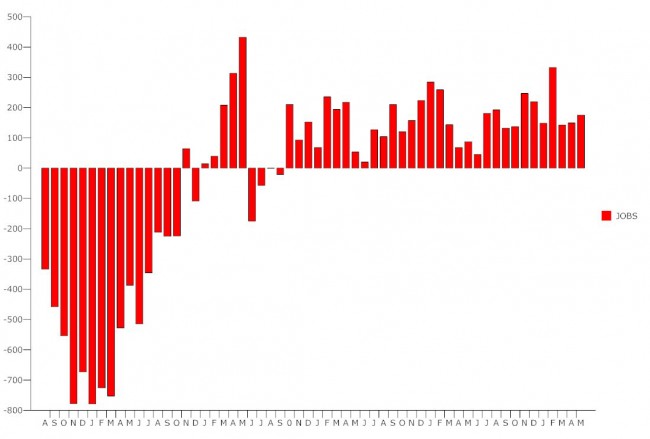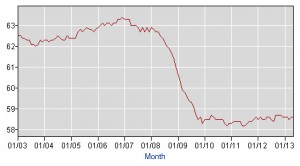
Just to keep up with the natural growth rate of the job market, the economy needs to add at least 150,000 jobs a year. For the past 12 months, it has averaged 175,000 a month, enough to bring down the unemployment rate steadily, but not impressively: that rate was 8.2 percent a year ago. It fell to 7.5 percent in April. But in May, it rose again to 7.6 percent, even as the economy added another 175,000 jobs.
Numbers for March and April were revised from a total job creation of 303,000 to 291,000, a small decline that nevertheless contributed to the uptick in the unemployment rate. In sum, the economy is continuing its anemic pattern of adding barely enough jobs to sustain what looks like a recovery, but not enough jobs to restore the economy to a strong, confident footing. And troubling news continues to cloud the future.






























Dave C. says
I think one thing here that has been massively overlooked is the fact that as the economy improves and more “discouraged” workers who had previously stopped seeking employment go back into the labor force and search for a job, the unemployment rate will slightly rise. It just makes sense, discouraged workers are not counted into the unemployment rates, but job-seekers are. Move the discouraged into the seeking, and the rate rises, although the economy is really improving.